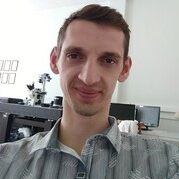Semiconductor Nanostructures: Growth, Properties and Emerging Applications
A special issue of Crystals (ISSN 2073-4352). This special issue belongs to the section "Crystalline Metals and Alloys".
Deadline for manuscript submissions: closed (31 August 2021) | Viewed by 9188
Special Issue Editors
Interests: epitaxy; crystal growth; semiconductors; A3B5; thin films; heterostructures; nanostructures; quantum dots; self-assembling; mathematical modelling; stochastic simulation; Monte Carlo method
Special Issue Information
Dear Colleagues,
The development of the devices of nanoelectronics, photonics, and quantum technologies inevitably requires a transition to methods and approaches based on the active use of semiconductor nanostructures: quantum wells, quantum dots, nanowires, etc., as well as complex systems based on them. On the one hand, this opens up wide opportunities for improving the key device characteristics (sizes, speed, performance, power consumption, etc.) by using the unique properties of these structures. On the other hand, this significantly toughens the requirements not only for parameters of these nanostructures (morphology, structure, chemical composition, etc.), but also for their reproducibility. In this regard, there is a need to develop methods and technological processes that can efficiently control the nanostructure formation, providing a high level of control not only over the uniformity and reproducibility of the parameters, but also over the shape, size, position and degree of isolation of each functionally active element separately.
This Special Issue, “Semiconductor Nanostructures: Growth, Properties and Emerging Applications”, will be a collection of full papers, short communications and review papers focusing on recent progress in the field of semiconductor nanostructure growth, characterization and simulation as well as elements and devices based on them.
Dr. Sergey Balakirev
Dr. Maxim Solodovnik
Guest Editors
Manuscript Submission Information
Manuscripts should be submitted online at www.mdpi.com by registering and logging in to this website. Once you are registered, click here to go to the submission form. Manuscripts can be submitted until the deadline. All submissions that pass pre-check are peer-reviewed. Accepted papers will be published continuously in the journal (as soon as accepted) and will be listed together on the special issue website. Research articles, review articles as well as short communications are invited. For planned papers, a title and short abstract (about 100 words) can be sent to the Editorial Office for announcement on this website.
Submitted manuscripts should not have been published previously, nor be under consideration for publication elsewhere (except conference proceedings papers). All manuscripts are thoroughly refereed through a single-blind peer-review process. A guide for authors and other relevant information for submission of manuscripts is available on the Instructions for Authors page. Crystals is an international peer-reviewed open access monthly journal published by MDPI.
Please visit the Instructions for Authors page before submitting a manuscript. The Article Processing Charge (APC) for publication in this open access journal is 2100 CHF (Swiss Francs). Submitted papers should be well formatted and use good English. Authors may use MDPI's English editing service prior to publication or during author revisions.
Keywords
- semiconductors
- epitaxy
- self-organization
- nanostructures
- quantum dots
- quantum wells
- nanowires
- heterostructures
- growth processes
- characterization
Benefits of Publishing in a Special Issue
- Ease of navigation: Grouping papers by topic helps scholars navigate broad scope journals more efficiently.
- Greater discoverability: Special Issues support the reach and impact of scientific research. Articles in Special Issues are more discoverable and cited more frequently.
- Expansion of research network: Special Issues facilitate connections among authors, fostering scientific collaborations.
- External promotion: Articles in Special Issues are often promoted through the journal's social media, increasing their visibility.
- Reprint: MDPI Books provides the opportunity to republish successful Special Issues in book format, both online and in print.
Further information on MDPI's Special Issue policies can be found here.






